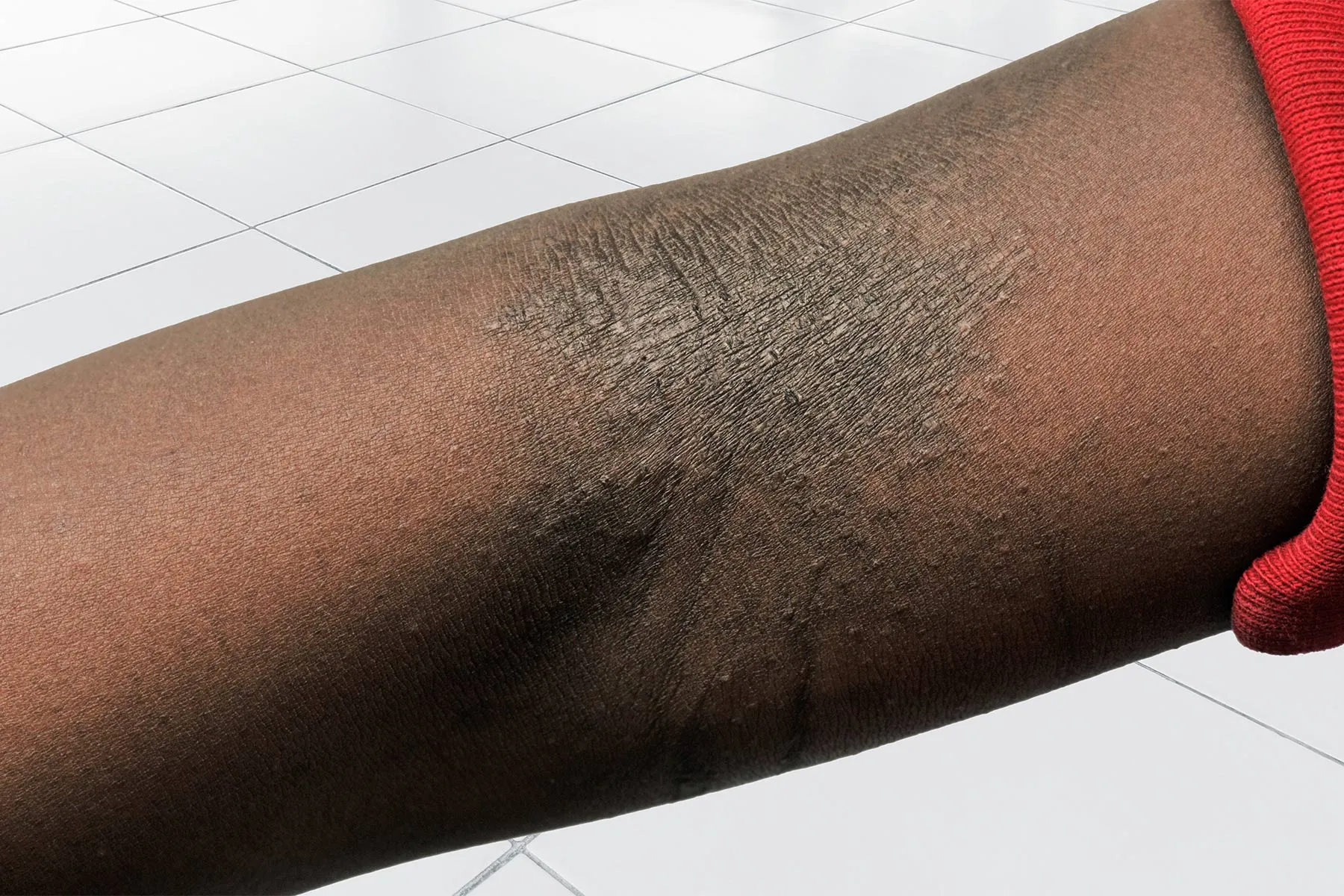‘Outrageous Outcomes’: Plea Bargaining and the Justice System
The particular "genius" of plea bargaining is that it seems to allow defendants a chance to reduce harsh sentences while locking them into a system that is stacked against them, says attorney Dan Canon in a conversation with The Crime Report about his new book.


Photo by Karen Neoh via Flickr
A common misconception, perpetuated by popular television shows and movies, as well as the Sixth Amendment, is that everyone gets their day in court.
However, according to the National Association of Criminal Defense Lawyers, less than 3 percent of criminal cases have gone to trial in the last five decades. The remaining 97 percent have been decided by plea bargain: an arrangement made between a prosecutor, defense attorney, judge, and the defendant under which an individual enters a guilty or no contest plea in exchange for a reduction in the level of a charge, a reduced number of charges, or the recommendation of a lighter sentence.
For Dan Canon, author of Pleading Out: How Plea Bargaining Creates A Permanent Criminal Class, the connection between plea bargaining and the deplorable state of the American criminal justice system, which has resulted in the highest incarceration rate in the world, is no accident.
In a conversation with The Crime Report, Canon, a civil rights lawyer who teaches at the University of Louisville in Kentucky, discusses the class-based origins of the plea bargaining process, how bad prosecutors and poor defense attorneys further distorted the process, and why reforming it will be so difficult.
This transcript has been edited for space and clarity.
The Crime Report: Why did you write this book?
Dan Canon: I’ve been representing incarcerated people for about 15 years, and I have had lots of conversations with people who have been locked up for a long time. Some of them understood were pleading to; many did not, and many of them pleaded to something that was drastically different than what they were charged with, or for crimes that they didn’t actually commit. But they were still frog-marched into a plea bargain by their defense attorney or the prosecutor or the judge or some combination thereof.

Dan Canon. Photo by Brandy Brewer
Today 97 percent of all U.S. criminal cases are resolved by guilty pleas, most of which are the results of a plea bargain, and that number is rising. No other country locks up the number of people that we do. We also have a much higher rate of plea bargain cases than the rest of the world: almost 20 percent higher than just about any other common law country. I wanted to write a book about what regular people might be able to do to fix this. I also wanted to find out whether there was any correlation between the tremendously bad criminal justice outcomes that we have in this country and the number of cases that we resolve by guilty plea. And I think that the answer is yes.
TCR: The first part of your book focuses on the roots of the current legal system in English Common. Why does that matter?
DC: There’s an interesting English practice I talk about in the book called the “practice of leniency.” From about the 1600s, they had a gigantic Criminal Code where everything was a felony and every felony was punishable by death. But, by roughly the middle of the 19th century in England, you can see that almost nobody who gets sentenced to death is put to death because of this practice of leniency. Judges had a lot of discretion. People could petition noblemen or the crown directly to appeal their sentence and, very often, they were successful. In fact, in 1819, there were more than 1,200 death sentences in England, but only 97 were carried out. The whole point of this practice was to improve social ties between the lower classes and the ruling classes. Leniency disguised the overclass interests in the legal system in England at that time because it wasn’t really designed to do anything good for the working classes or for the poor.
However, after the industrial revolution [and the rise of] the English working classes, there just weren’t enough police to keep whacking people over the head with the criminal law. They used the practice of discretion to make it seem as if the lower classes were actually a participant in the system and to demonstrate how fair they were by not putting people to death and, instead, either letting them off or doing something else terrible to them. That was parlayed into plea bargaining in the United States.
When it was instituted, there was overt classism in the legal system: you’re basically only going to have a lawyer if you can afford one. The courts are not for landless laborers. As soon as that starts to change, however, and you’ve got universal white male suffrage, you’ve got more working class people sitting in jury boxes. Plea bargaining became a way to take cases away from these juries, keep the public out of the courthouse, and maintain the class interests that were already there in the legal system.
And there really hasn’t been much change at all since then. It’s a legal system that prides itself on its sameness and we’ve retained a lot of the tools that were originally designed to keep the lower classes out of the legal system unless they were on the receiving end, plea bargaining being one of them.
TCR: But you suggest in your book we’ve gone in another direction?
DC: Well, the creation of all this criminal law has made it very easy to subject any individual to state authority by specifically making them part of the criminal class. Today, one out of every three adults in this country has a criminal or arrest history of some kind. This is perhaps best understood in terms of the kind of discretion that we give to police officers. Since a police officer knows that whatever arrest they make is very likely to end in a conviction by plea bargain, that they’re never going to have to testify in front of a jury because no cases go to jury trials, they know they can pretty much get away with whatever.
Twenty years ago, the late professor William Sconce said that too much discretion in the law makes for no law at all. Today you have police on the streets that know that they can arrest anybody for anything and make it stick, even if it’s something that’s not a crime. I cite a story in the book from Tulia, Texas, where a cop goes out and arrests around 10 percent of the black people in town and frames them for drug crimes that they didn’t commit. Lo and behold, most of them pleaded guilty because they felt like they had no other choice.
It’s important that we recognize the psychological effects of slapping that criminal label on somebody. It’s a great alienating force that disrupts working-class solidarity and solidarity among the lower classes. Not only do people not want to associate with you, but you also don’t want to associate with people and, as a result, you withdraw from society, become more apathetic to civic issues, and adopt more antisocial behaviors.
TCR: Why do criminal labels and criminal processes affect a certain class of people and not others?
DC: Our whole criminal justice system is built on expedience: cram as many convictions through as possible as quickly as possible. So, when somebody who really doesn’t have the resources to fight in court, challenges their charges, then the prosecutors typically respond by slapping them with higher charges. The story of Paul Hayes at the beginning of the book is a classic example of that: he gets popped for an $8 check and the prosecutor says if he takes a plea bargain he’ll get five years, but if he makes them go through the inconvenience of trial he’s getting life.
This is the kind of thing that, even though it was controversial in the 1970s, happens every day today. However, if somebody has the resources to fight a case in trial and make the prosecutor and the defense attorney’s jobs harder, and make the courts job more drawn out and more expensive, then the prosecutors also have the power to lower the charges or make the charges go away altogether. If you accept that the guiding principle of the whole system is expedience, then it makes sense that somebody with more resources and more means would be able to get off. And if it comes down to being able to avoid a trial or being able to avoid potentially a public embarrassment for the prosecutor, that’s often what happens.
TCR: How do bad prosecutors and bad defense attorneys figure into this system?
DC: Again, if you accept that the system is driven by this obsessive need to create as many criminals as possible in the least amount of time possible, and that expediency has been the core principle of the system since at least the 1920s, I think that everybody falls victim to the same trap. You have prosecutors who want to get the cases over with as fast as possible so they can get on to the next case. Meanwhile, ,the defense is eating everything that the prosecution chooses to prosecute. They’ve got all these cases stacking up, sometimes as many as 500 cases depending on the jurisdiction, and in some places they may only get an average of six minutes with a client one time right before they plead and then that’s it.
That’s the norm with public defense, and especially urban public defense, and so they just try to move those cases as quickly as possible in order to focus on the two or three that are actually going to go to trial. It creates this incentive to just get it off your desk,. The pressure is hifgest for for public defenders because they don’t really get to pick and choose their cases. Right now, 95 percent of defendants with criminal cases in the system are either represented by appointed counsel or eligible to be represented by appointed counsel. That leaves 5 percent for everybody else to fight over.
At the top you have a few white collar criminals; in the middle you have some blue collar accused who can afford, in theory, to hire their own lawyers; and you also have all these former public defenders out there fighting for a market share on that little tiny wedge of blue collar criminal defendants. And that wedge is getting smaller and smaller as the wealth gap continues to increase. In Alaska, after the prosecutor’s office instituted the plea bargaining ban in 1975, they went from roughly 4 percent of all the cases being screened out by that office to 44 percent basically overnight.
TCR: When did the guiding philosophy of our criminal justice system connect to the concept of stare decisis, which obligates courts to follow historical cases when making a ruling on a similar case?
DC: The law exists to protect capital. In the 1830s, around the same time that you see the first plea bargains happen in Boston, the legal system was openly and obviously operating along with other institutions to break the back of organized labor. Then, in 1842, alongside the creation of the first Federation of Labor union in New York, the powers that be [understood] that they couldn’t continue to prosecute workers under conspiracy statutes for organizing because their demographic was getting too big/
 So, the courts do an about face, give up that strategy, and begin prosecuting individual workers, instead of groups, under broad statutes like drunk and disorderly or vagrancy. By doing that they were able to better protect capital from organized labor by disrupting working class solidarity. Then they institute the plea bargain, start taking power away from juries, and usher in a giant explosion of criminal laws, and enforcement of criminal laws at the federal level, that were really aimed at individual working class people.
So, the courts do an about face, give up that strategy, and begin prosecuting individual workers, instead of groups, under broad statutes like drunk and disorderly or vagrancy. By doing that they were able to better protect capital from organized labor by disrupting working class solidarity. Then they institute the plea bargain, start taking power away from juries, and usher in a giant explosion of criminal laws, and enforcement of criminal laws at the federal level, that were really aimed at individual working class people.
And the idea of stare decisis in the legal system, of doing things the way they have always been done, means that you have a consistent rule of law that’s applied consistently over time and relying on outdated principles that are not only centuries old, but also racist and classist, and only work for today if you’re trying to maintain the same sort of classism and racism that was going on two centuries ago.
TCR: Can you expand on the discretion of judges with regards to the eccentric and arbitrary sentences they can institute to maintain this rule of law?
DC: This is a direct result of the public being completely extracted from the whole process of criminal justice. A plea bargain happens completely in secret 99 percent of the time. Two lawyers go into a conference room, the defendant may be involved but usually is not, and they talk about what the charges are going to be and what the sentence is going to be. When the lawyers come up with something, they bring it to the judge who almost always just rubber stamps whatever they decide upon.
The public never sees that, the higher courts never see that, and a jury never sees that. And the outrageous outcomes that I list in the book, such as sentencing someone to go to church, to physical castration, to spending a month in a dog house, are what the lawyers came up with or what the judge came up with on the back end.
And since plea bargaining essentially puts a gun to the defendants head, it looks like they’ve agreed to these sort of outrageous outcomes. That’s the genius of plea bargaining at work because it looks like they agreed to whatever draconian conditions have been appended on to their sentence, even if those conditions are patently unconstitutional or nothing that either a jury or a judge could ever legitimately order.
It looks to the defendant, and perhaps to the casual observer, that this was a fair and equal bargaining process between equal negotiating parties. And even if the defendant thinks that it was the most drastically unfair thing to ever happen, they also know that if they appeal it, and win, which is very rare, then they’re still going to have to do the prison sentence they were trying to avoid in the first place.
So, because appeals are so rare in these cases, no higher court ever sees them, no jury ever sees them, and the public never sees them. Meanwhile, they’re happening all over the country all the time.
TCR: How does the legal field fail to prepare fledgling attorneys for the rigors of the job and what effect does this have on them in the future?
DC: Some of the problems are with the way that we teach students, but many of them are the problems of capitalism in higher education in general. You have a situation where somebody who is a perfectly well intentioned student coming from the lower or the middle classes and wants to change the world with a law degree.
But there’s an old adage that has been around since I was a law student: in the first year of law school you want to change the world, in the second year you want to help people and hopefully make a good living, and in the third year, you’re really just ready to get out and make money and have a job somewhere. Part of that has to do with the enormous amount of student loan debt that law students are graduating with that makes it very hard to convince people to go and work on legal problems of the poor.
That’s why today something like 2 percent of all lawyers work on legal problems facing low income people, including public defense. It’s a vicious cycle because somebody that’s ranked at the top of their class in just about any school is going to get picked off by the largest firms that are out there. Meanwhile, we don’t do a very good job of telling students that with a law license comes the power to do something else and that you can actually represent real people and make a decent living. We’re not talking enough about the practicalities of the different ways in which people can practice.
TCR: What are the potential routes to achieving reform? You cite some alternativc strategies taken in Canada, India and the United Kingdom.
DC: No other country has ever done things the way that we do and every other country has better criminal justice outcomes. But it would be silly to say that if we reduce the number of plea bargain cases that we’re going to have a system that is going to rival something like Canada or the UK.
We have a whole host of other problems in the United States that are uniquely American problems, but I do think that reducing the number of bargain cases, and increasing the number of trials, provides a net social benefit that has system wide effects. I have a quote in the book from former Chief Justice Warren Berger who said that if you just increase the number of trials by 10 percent that requires a doubling of court staff, court resources, lawyer time, and everything that it takes to make the system run.
So the conventional wisdom, which I think has done real harm in the legal community, is that if you increase trials the whole system is going to crash. Which is a silly idea because if you look at common-law countries that don’t rely on plea bargaining as much, such as Canada, the United Kingdom, or Australia, the system doesn’t collapse. It adapts and becomes more intelligent. I also think that if you empower the public, especially those more likely to become involved in the criminal justice system, to understand that just because you are offered a plea bargain doesn’t mean you have to take it, and that you still have a right to trial and that plea bargaining has been terrible for society, it’s possible to achieve that 10 percent. There’s just this big cultural hump to get over.
TCR: Do you see the U.S. punitive and retributive culture changing?
DC: In the book, I talk about the participation theory of democracy, which says that if you participate in a deliberative process and do your civic duty then you’re going to care about your community a little bit more. You’re going to care about democracy a little bit more. And there is no more deliberative process that a citizen can take part in aside from participating in a jury, but, over the last 150 years, we’ve taken that away from people entirely. [But] the more citizen involvement in the criminal justice system you have, the more of these problems start to go away.
Isidoro Rodriguez is deputy editor of The Crime Report.

 Landwebs
Landwebs 

















